A family favorite since I was a child, these Mini Cheesecakes have a cookie crust, topped with an easy, creamy cheesecake. Top them with pie filling for the perfect treat.
One thing I love about these mini cheesecakes is that they are so easy to make! For more easy cheesecake recipes, try this No Bake Cheesecake or this Instant Pot Key Lime Cheesecake.
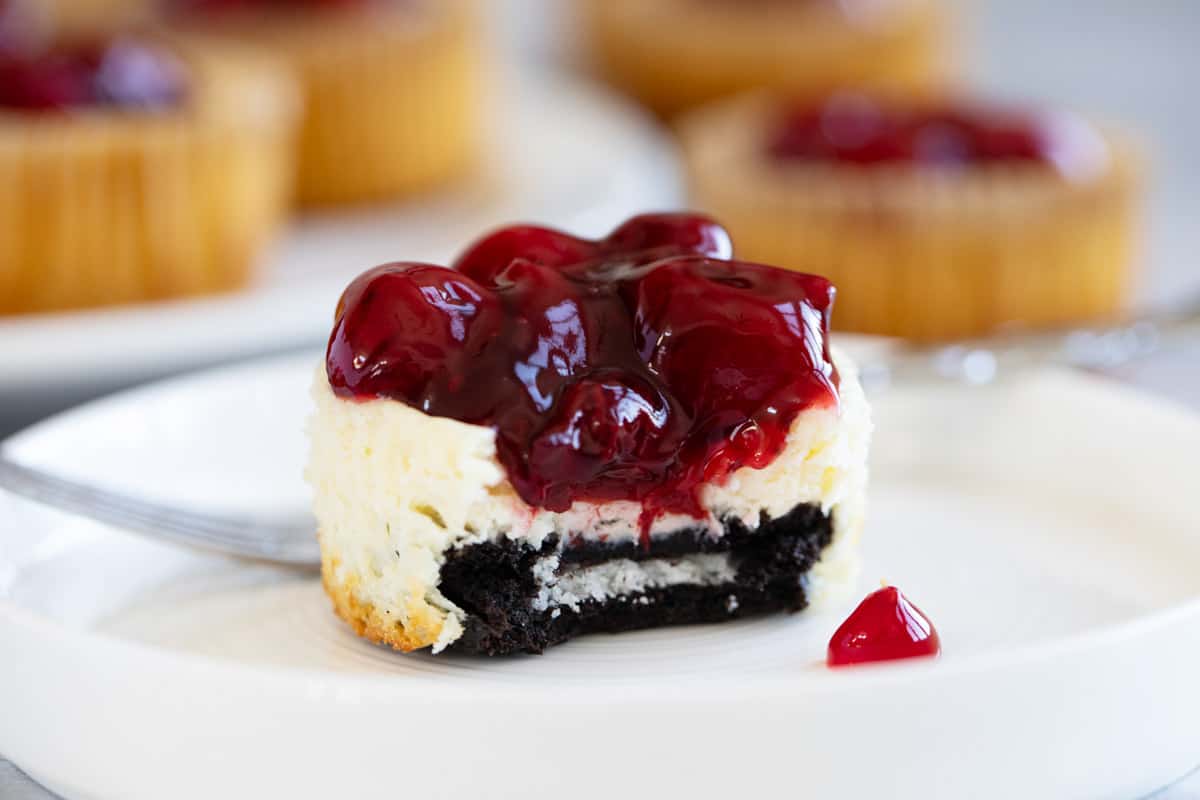
I have been eating these mini cheesecakes since I was a kid. I always loved them, and I love them even more now since I know how easy they are to make!
Just 6 ingredients, this is a great dessert for sharing, or even for dessert night at home. We are cheesecake fans, and this mini version always hits the spot!
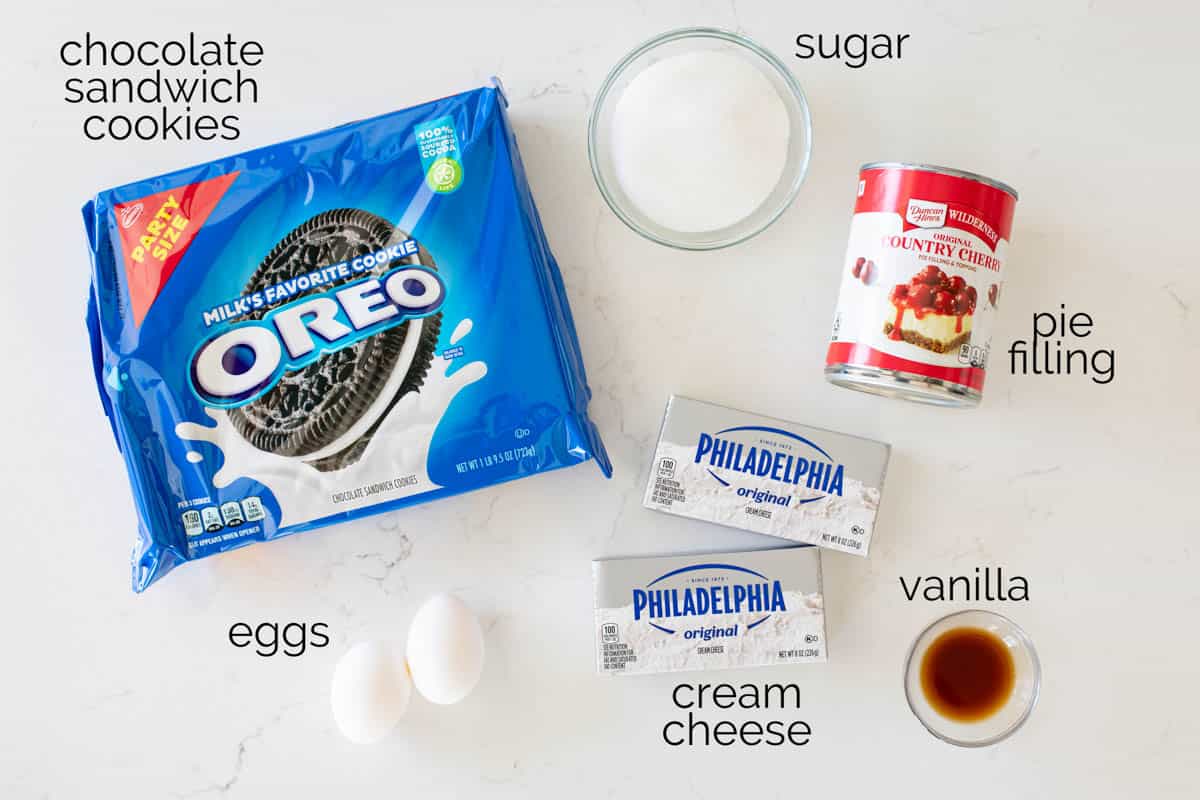
Ingredients
- Chocolate Sandwich Cookies: Otherwise known as Oreos. I love the chocolate and cheesecake combo, but you can easily swap these out for vanilla wafers or another cookie. You can even make a graham cracker crust for each cheesecake if you want to put in a little more work.
- Cream Cheese: Make sure your cream cheese has had a little time to soften. I like to put it out on the counter about 30 minutes before I start.
- Sugar: You just need regular, granulated sugar.
- Eggs: You want 2 large eggs.
- Vanilla: The vanilla will add great flavor, so make sure you use a pure vanilla extract.
- Pie Filling: I like to top my cheesecakes with cherry pie filling. Check out the tips and tricks section below for more topping ideas.
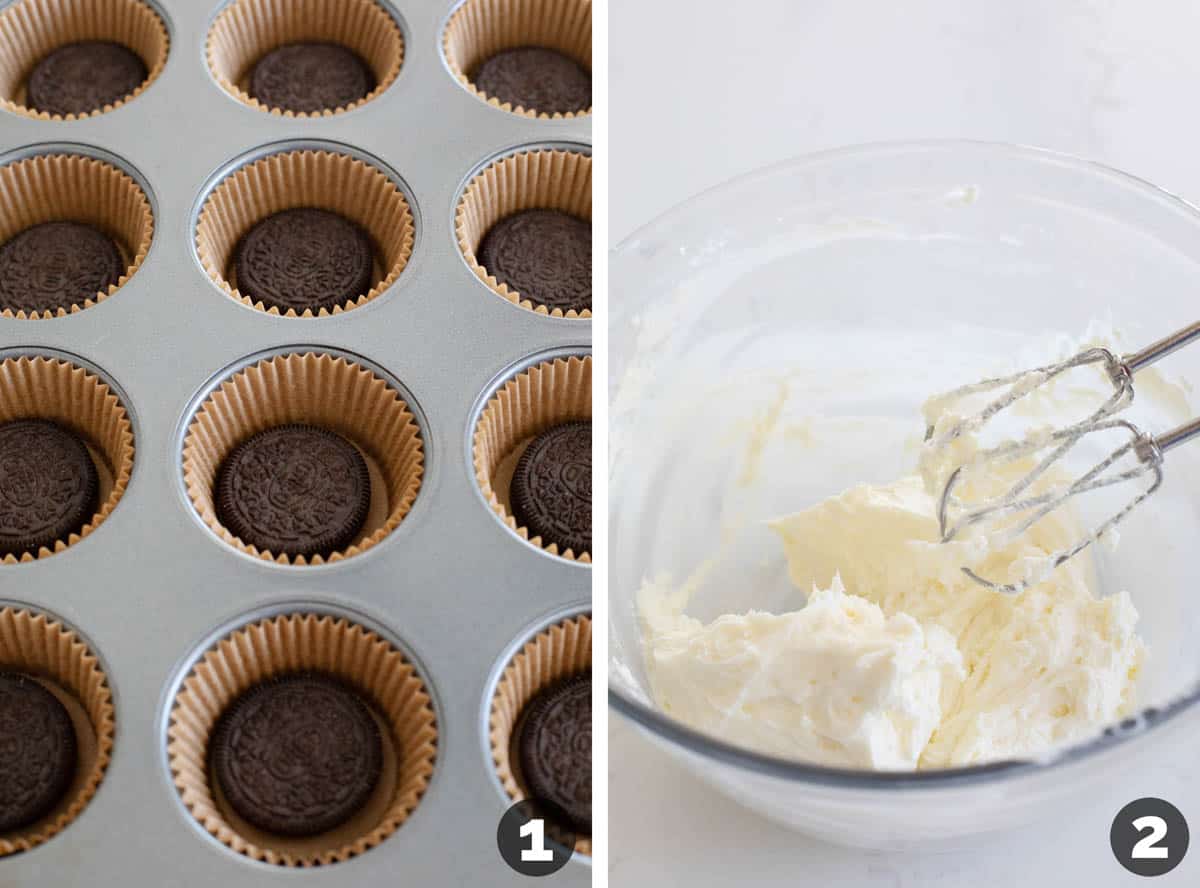
How to Make Mini Cheesecakes
STEP 1: Place paper liners in 18 muffin cups. Then place one cookie in each liner. Set this aside.
STEP 2: In a large bowl, beat the cream cheese. You want to make sure it is nice and smooth and fluffy. Add the sugar and beat until it is combined.
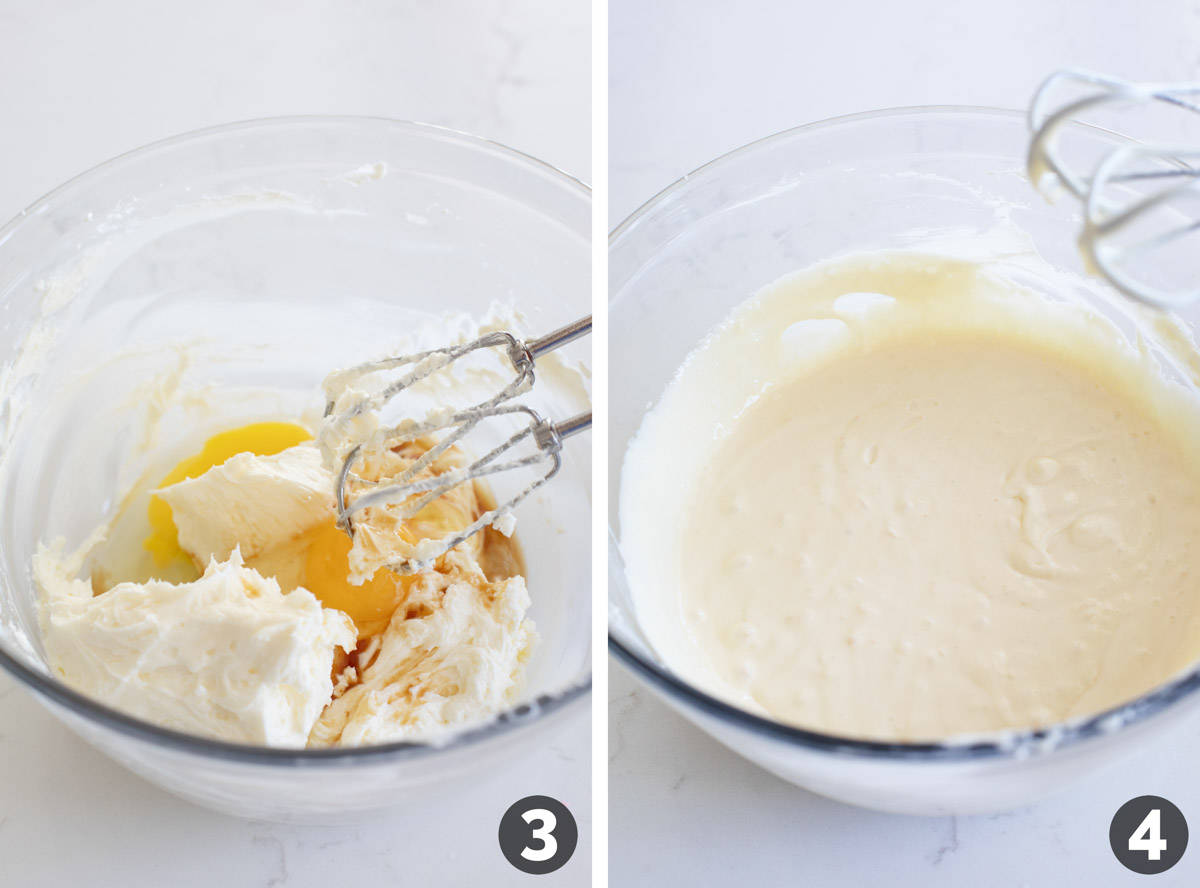
STEP 3: Add in the eggs and the vanilla.
STEP 4: Beat it all together, just until combined.
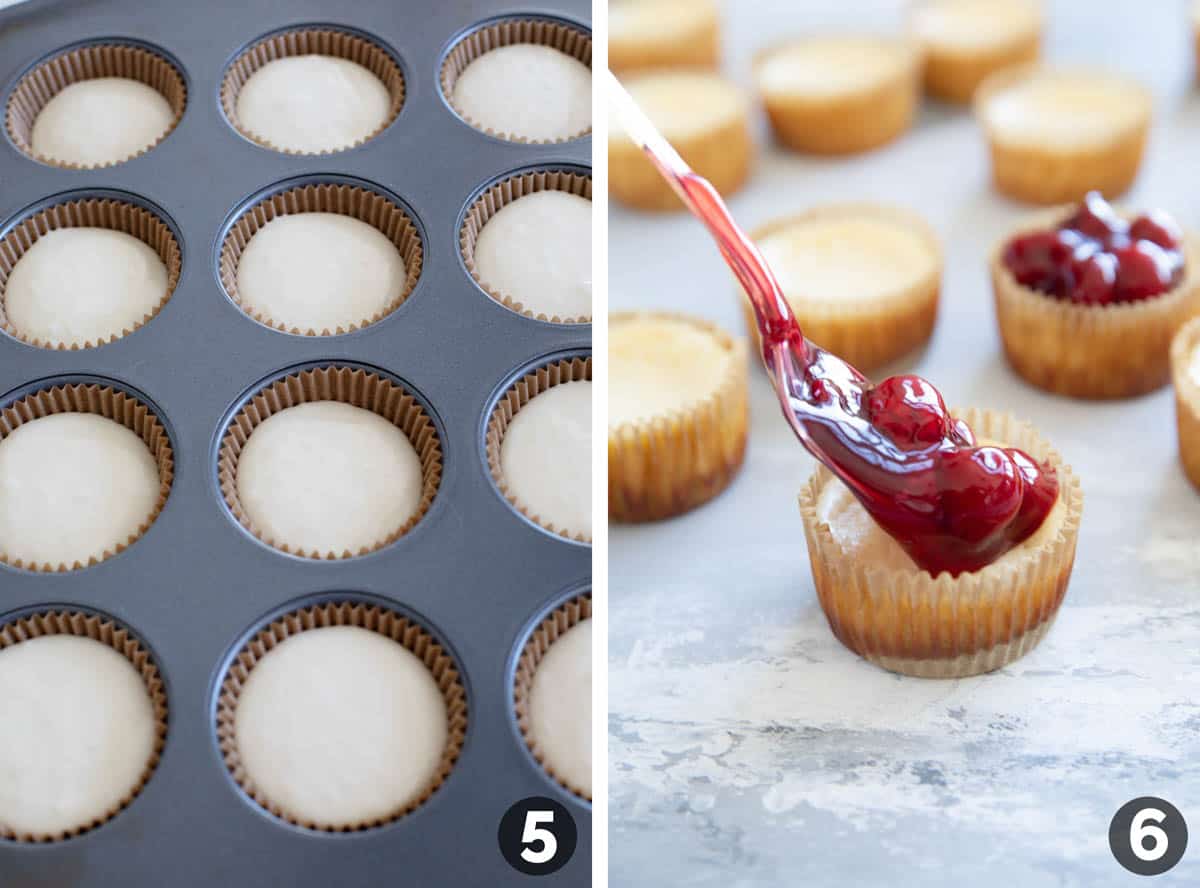
STEP 5: Divide the batter between the prepared cups, then bake until the cheesecakes are just set. You don’t want to over-bake them.
STEP 6: Let the mini cheesecakes cool, then add a spoonful of pie filling on top of each cooled cheesecake.
Mini Cheesecakes Video
Watch the video above if you want to see how they are made!
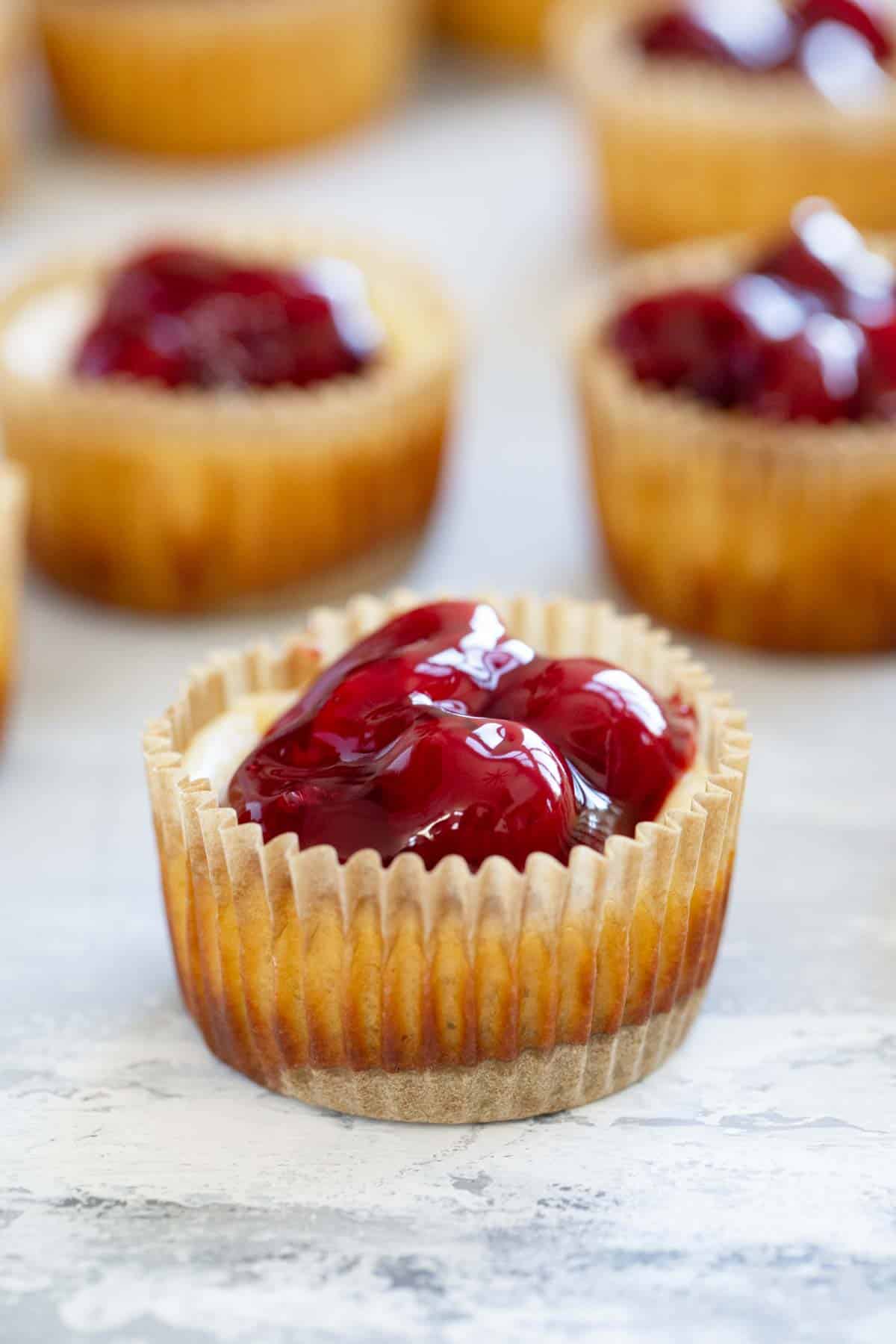
Tips and Tricks
These mini cheesecakes can be made a day before serving. Just don’t add the topping until you are ready to serve.
They also freeze well. Once again, leave the topping off and freeze in an airtight container for up to 3 months. Let them thaw in the refrigerator overnight.
Get creative with the toppings! I usually keep it simple with cherry pie filling, but here are some other ideas:
- Lemon curd
- Chocolate sauce
- Salted caramel
- A thin layer of jam
- Whipped cream
- Fresh fruit
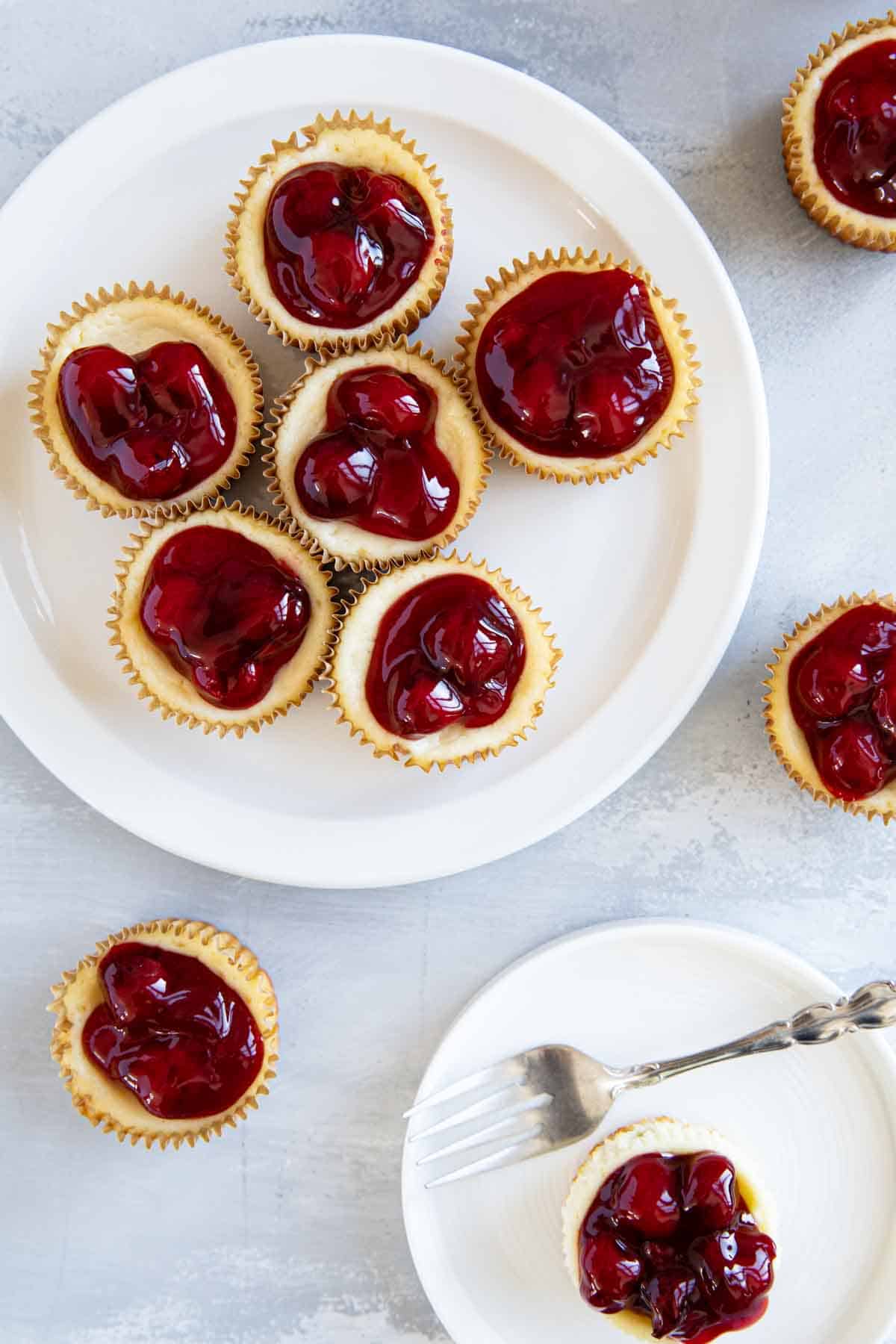
More Cheesecake Recipes
Lemon Cheesecake
Snickers Cheesecake
Sour Cream Cheesecake
Dulce de Leche Cheesecake
Carrot Cake Cheesecake
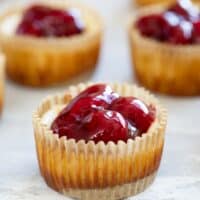
Mini Cheesecakes
Ingredients
- 18 chocolate sandwich cookies*
- 2 packages 8 oz each cream cheese, softened
- 1/2 cup sugar
- 2 large eggs
- 2 teaspoons vanilla extract
- 1 can 21 oz cherry pie filling
Instructions
- Preheat the oven to 375ºF. Line 18 muffin tin cups wit paper liners. Place one cookie in the bottom of each cup.
- In a large bowl or the bowl of a stand mixer, beat the cream cheese until smooth. Add the sugar and continue to beat until combined. Add the eggs and the vanilla, and beat until light.
- Divide the cheesecake filling evenly between each of the muffin cups. Bake in the preheated oven just until set, 12-15 minutes. Let the cheesecakes cool completely.
- Before serving, top each cheesecake with a large spoonful of the pie filling.


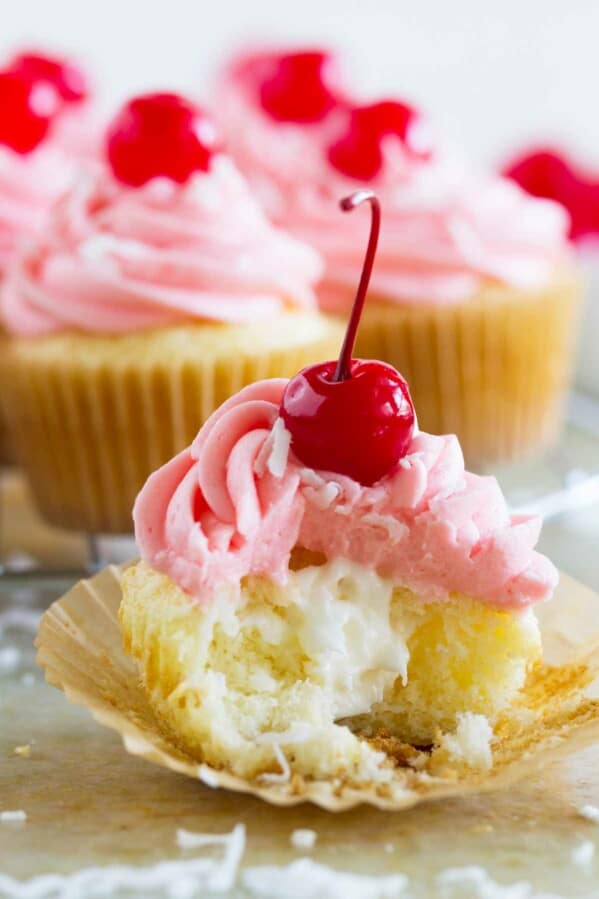
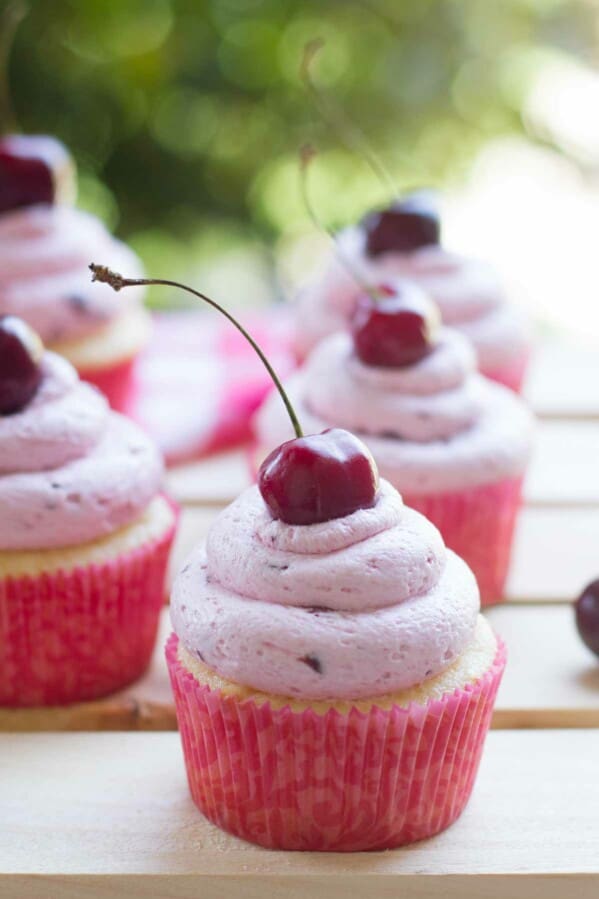




Lynne says
These look delicious! Would it be okay to make these the night before, then top with the cherries and ReddiWhip just before serving?
Deborah says
Yep – the cookie gets soft, but I actually like them the day after the best!
Jamie Lothridge says
I’ve never met a cheesecake that I didn’t like. These look so perfect!
Lisa @ Wine & Glue says
This is so sweet!! And I really want to put Rediwhip on ALL THE THINGS!
Peabody (Culinary Concoctions by Peabody) says
One of my all time favorites are the little cherry cheesecakes, I need to make again. And love me some Redi Whip…I really like the Extra Creamy one they make.
Rachel Cooks says
These are perfection! Love the chocolate bottoms.
Joanne Bruno says
You are really making things tough for this cheesecake-loving pregnant lady…I NEED THESE!
Joanne Bruno says
You are really making things tough for this cheesecake-loving pregnant lady…I NEED THESE!
Dorota | HappyForks.com says
Hi Deborah, it’s so true that cooking for somebody is greater joy. We show love and care by sharing food. I love not only cooking FOR but also cooking WITH family and friends. It’s a great idea to spend some time together, talk, have fun and of course eat at the end. What do you think?